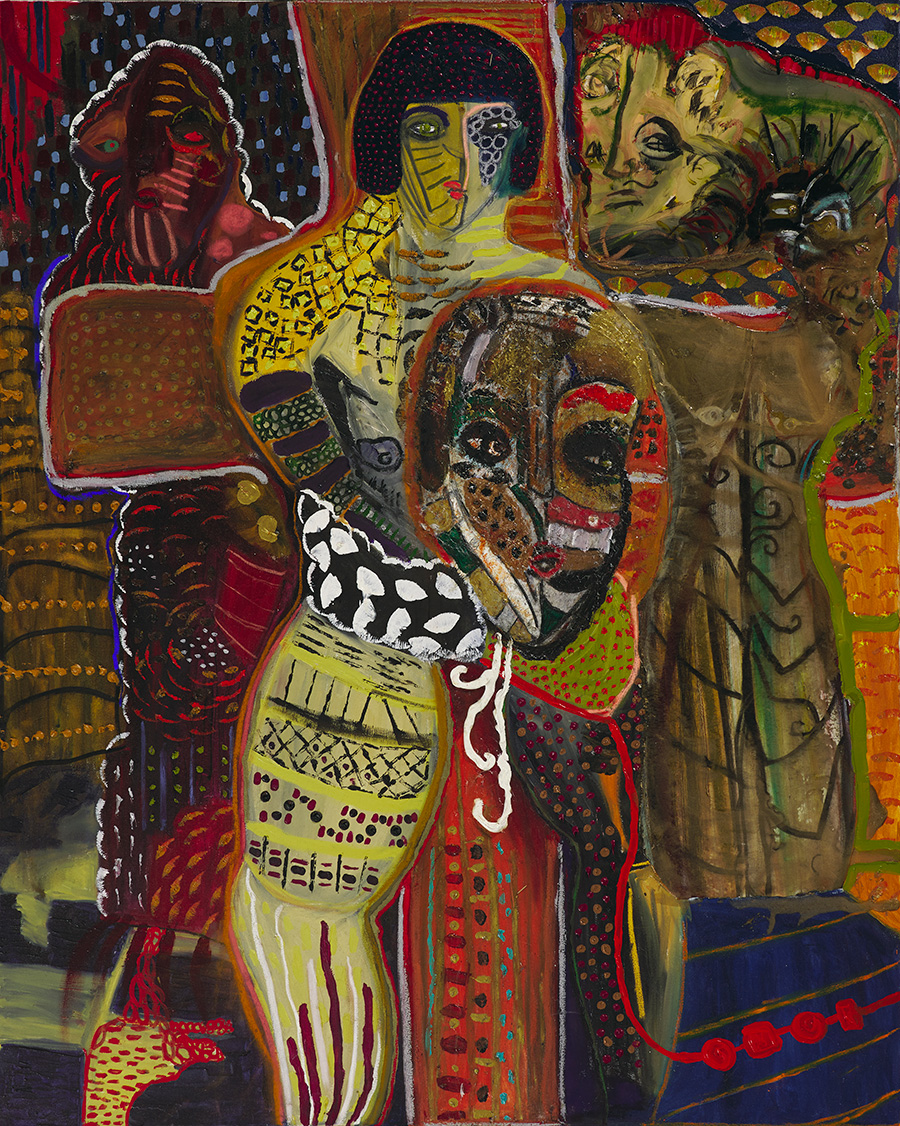Mona Osman’s Dizzying World
Collezione Maramotti, Reggio Emilia, exhibits the painter’s postmodernist appropriation of philosophical and historical narratives
Collezione Maramotti, Reggio Emilia, exhibits the painter’s postmodernist appropriation of philosophical and historical narratives

When the Italian fashion designer Achille Maramotti began collecting contemporary art in the 1970s, he developed a knack for spotting emerging talents. Today the Collezione Maramotti in Reggio Emilia is peppered with early works by Alex Katz, Anselm Kiefer, Gerhard Richter and Julian Schnabel, alongside vanguard artists based in Italy, including Jannis Kounellis, Luigi Ontani, Mimmo Paladino and Claudio Parmiggiani. The art is overwhelmingly male and predominantly painted – a testament to the times, perhaps, but mainly to Maramotti’s own predilection for painting and, well, male artists.
The collection has addressed its uneven focus with several new commissions. Last autumn, British painter Phoebe Unwin showed new works, marking her first solo show in Italy, followed by an exhibition by the Italian artist Margherita Moscardini. Most recently, Helen Cammock unveiled her show ‘Che Si Può Fare’, while the Bristol-based Mona Osman has been invited to produce works for the collection’s Pattern Room, in line with its ethos of promoting and supporting the work of emerging artists.

‘Rhizome and the Dizziness of Freedom’ is Osman’s first solo show at a major institution. Stepping into the gallery means being catapulted into a twisted, overwhelming and dizzying world. Philosopher Søren Kierkegaard saw anxiety as one caused by the ‘dizziness of freedom’ when faced with life’s endless possibilities. That disorientation abounds here. The works – three of which are larger in scale – are densely arranged, every surface heavy with thick textures, patterned in Gustav Klimt-like swirls, rectangles and circles from which contorted human bodies ascend. Dark, velvety colours dominate: black, blue, mauve, burnt sienna, olive green. Osman’s style might be described as an alloy of expressionism and cubism with echoes of Klimt and Francis Bacon, spun and propelled into our 21st-century influencer and internet-obsessed world. Dark, disturbing and at times overdone.
The paintings in the show were all developed in parallel – a first for Osman – and presented as a single body of work which, as the title indicates, draws upon postmodernist and existentialist frameworks to reinterpret Biblical stories as tools for navigating contemporary society. For Osman, the obsessive quest for betterment by searching for an absolute self is destined to fail – as exemplified here by the story of the Tower of Babel. Osman equates humanity’s doomed zealous overreaching, in this origin story, to our contemporary aspirations.

The paintings Sodom and Gomorrah (2019), Eaten by Facticity (2019) and Self-Crucifixion (2019) all examine the negative ramifications of repressing – or sacrificing – certain aspects of ourselves in pursuit of a better self. Sodom and Gomorrah is overcrowded by deformed, Picasso-esque figures. In Self-Crucifixion, a woman holds a face – the absolute self – as she rests on a crucifix. Stretches of the painting are covered in resin, giving it a shiny, almost gilded quality. In Eaten by Facticity, a naked female body is being devoured by grotesque faces. Standing in the middle of the room, Turn the Other Cheek (2019) provides some respite from the dizzying chaos. Here the face is now blended into the background, split into two. Perhaps, as Simone De Beauvoir once famously said and Osman seems to imply, it is only by embracing ambiguity that we can find freedom.
Main Image: Mona Osman, Eaten by Facticity, 2019, oil and mixed media on canvas, 120 × 155 cm. Courtesy: the artist and Courtesy C&C Gallery, London
























